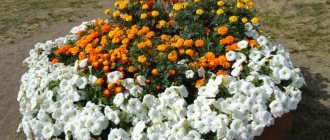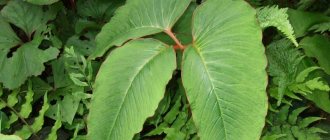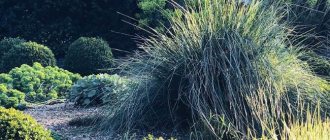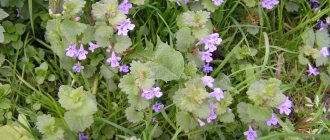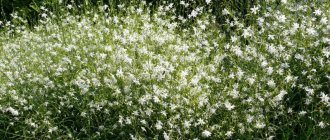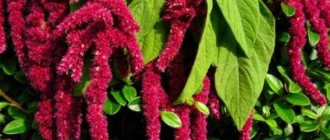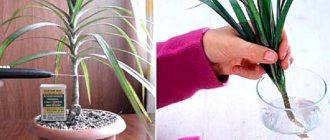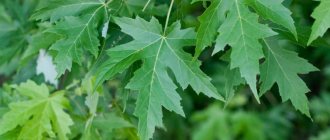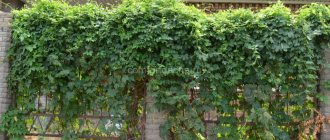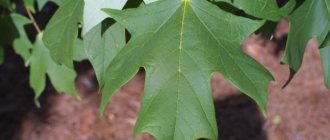In the vast expanses of our Motherland - in the tundra and steppes, in the mountains and on the plains, in swamps and fields - over twenty thousand wild and ornamental plants grow. These include two thousand different trees and shrubs, and the remaining eighteen thousand are herbaceous plants. What are they? First of all, it is a life form consisting of a root system and shoots (stems and leaves), and capable of withstanding the cold season for one or several years in a row.
Early flowers
Under the influence of the spring sun, the color of the red bark becomes richly bright, while the aspen bark acquires a greenish tint. In trees and shrubs, active swelling of the buds begins, and in coniferous plants, green pigments are renewed.
At this time, early representatives of perennial herbaceous plants begin to modestly peek out from under the snow cover. Their name speaks for itself, associated with the first thaw: snowdrops. These wonderful flowers are listed in the Red Book. In urban environments, they can be found infrequently due to compacted soil and lack of litter. Unfortunately, these representatives of perennial herbaceous plants are an attractive object for collection for the purpose of further sale, and therefore are in danger of extinction.
In vacant lots, slopes, and near construction sites, you can also find early “wild” flowering herbaceous plants. These include white anemone (oak wood), liverwort, yellow anemone (buttercup), goosebumps, and corydalis.
A little later, yellow coltsfoot inflorescences appear. This is a perennial pioneer plant, the first to colonize new territories. In early spring, only flowering shoots grow on the coltsfoot, but towards mid-summer it begins to develop large, beautiful leaves with a smooth surface.
At the same time as coltsfoot, a perennial herbaceous plant such as butterbur blooms. At the very beginning of spring, its shy inflorescences with dark red petals appear on the soil surface, and it also prefers to unfold wide leaves in mid-summer.
Pennisetum glaucum
- Height: up to 4 m.
Another name for the plant is pearl millet. It is easily recognized by its large, cattail-like feathers and dark purple foliage. Widely used for landscaping in the USA. Other, shorter plants are often planted against its background. It reaches a height of 4 m.
Tell your amazing story
GET 500 rubles
What do herbaceous plants look like?
The most common sign of this life form is the fact that they do not have a perennial ground part that can survive an unfavorable time of year or season. However, this criterion applies only to those plants that live in a variable-seasonal climate: “summer-winter”. A perennial herbaceous plant growing in the southern tropics or deserts, it grows to a very impressive size. Such growth is achieved precisely due to the presence of a perennial above-ground part.
In this regard, in order to distinguish herbaceousness, biologists use another criterion - the fact of the absence of lignification of the ground part, which should be juicy, fleshy, incapable of secondary thickening, and also highly diluted with soft tissues. But even these signs do not always work. The fact is that trees, shrubs, and herbaceous plants are separated from each other by many intermediate forms. In addition, lignification to varying degrees is characteristic of many types of grasses.
The structure of a herbaceous plant includes the root system and shoot. The shoot is formed by leaves, stem and flower part.
Let's look at the main types of herbaceous plants.
Banana, up to 9 m
One of the oldest cultivated plants, native to the Malay Archipelago. It is still grown in large quantities in tropical countries to be exported to other countries. The genus includes many species. All plants have a powerful root system, as well as a stem with 6-20 leaves. Its height varies, from 2 to 9 m and even higher, up to 12 m.
A banana often confused with a tree. It blooms 8-10 months after active growth. Fruits appear only from female flowers, and berries appear with a thick leathery shell, the size and color of the fruit depends on the variety.
Variety of species
Perennial herbs have stems that are underground or creeping along the ground surface and last for several years. Aboveground shoots have a much shorter lifespan: they tend to die off completely after a year. In their place, renewal buds remain, from which new shoots grow.
Herbaceous annual plants finally die off at the end of the growing season or after flowering and fruiting. The following season they emerge from seed again. Annuals include the following types of herbaceous plants: white pigweed, dill, wild radish, camelina. Thus, during one season they manage to completely go through their entire life cycle.
The genus of perennial herbaceous plants also includes herbaceous biennials. True to its name, this species lives for two years. During the first year, the process of shoot formation occurs, which has rosettes of basal leaves and a tap root. Only in the second year does a flowering shoot begin to develop. At the end of the flowering and fruiting phase, the entire plant dies.
The genus of herbaceous biennial plants differs from annuals by the remnants of last year's leaves at the base of the stem, and from perennials by the absence of a rhizome, tuber or bulb. In addition, biennials have no traces of last year's dead stems.
The perennial herbaceous plant also tends to die off at the end of the growing season. Despite this, a significant part of the plant remains alive underground during breaks between seasons. With the beginning of the warm period, new roots and a young stem begin to develop from living tissue. Similarly, forms of underground shoots such as bulb, corm, rhizome and tuber develop and grow. All perennial herbaceous plants have this characteristic feature. Examples of this are parsnips, carrots, mint, peony, and ferns. Perennial grasses are divided into four groups: super-early, early, middle, late. A sign of difference is early maturity, or the length of the growing season.
Herbaceous plants differ from non-herbaceous plants by the absence of an aboveground stem, which remains alive throughout the dormant season. In the new year, trees, shrubs and vines grow shoots from the above-ground parts.
Of particular interest are fast-growing grasses. Their description is expressed in just one name: pioneer plants. This life form is the first to colonize a new habitat, determining anagenesis of the plant species.
Classification
From a scientific point of view, herbs are divided into:
- Annuals - they die off completely after the growing season and fruiting (for example, dill, peas). They can only be renewed with the help of seeds.
- Biennials are plants whose full life cycle lasts up to 24 months and includes 2 growing seasons. These are, for example, cabbage, carrots, daisies.
- Perennials are plants whose life cycle is more than two years. St. John's wort, burdock, and banana are classic examples of perennial herbs.
Dimensions
There are places where very tall herbaceous plants grow. Examples of this are the Sikhote-Alin mountains, where the height of vegetation reaches from three to three and a half meters. In the Sayan Mountains of the Krasnoyarsk Territory, the average size of grasses is two meters. Separately, it should be noted the giant herbaceous plants, whose names are tall larkspur and angustifolia fireweed. The size of their stems averages from three to four and a half meters. Umbelliferous, cereal, and aster herbaceous plants are also characterized by a tendency toward gigantism. We hear their names almost every day, and an example of this is banana. Due to its impressive height (about fifteen meters), it is often called a tree, which is an erroneous assessment. The powerful stem of a banana is not a trunk, so it is classified as a herbaceous plant.
If you do not take into account such a feature as the degree of lignification, the tallest vegetation is bamboo. Its stem is a long straw that grows up to thirty-five meters.
Reed, up to 5 m
It belongs to the Poaceae family. It has long rhizomes, the stem grows up to 5 m, it is strong and hollow inside. The inflorescence is a dense panicle. find reed along the banks and in river deltas, in countries with a temperate or warm climate. There is a lot of it in Ukraine, near the Dnieper and Danube rivers. Reed loves water. Can grow in flooded meadows or swamps. In nature, this is a food source for some wild animals.
People used reeds to make roofs. Mats and other products were woven from it, and wind musical instruments were made. The rhizomes were eaten raw, boiled, and baked. But you shouldn’t use them for food for a long time, because... painful symptoms appear: saggy bellies grow, people become swollen, pain and heaviness appear.
Benefits and Applications
Plants and herbs have long been used by humans to satisfy their own economic and domestic needs. Their cultivation has also developed for use as pet food. Spicy herbaceous plants used in the food industry are widely used and in demand. Examples of this are rosemary, thyme, basil, and oregano. As a rule, herbs are used in cooking to improve the taste of food. Similar seasonings include dill, parsley, mint, caraway seeds, and garlic.
At all times, medicinal herbal plants have been widely used in medicine. The lavender flower is still used today as a sure remedy for insomnia, colds, and helps hypertensive and hypotensive patients overcome pressure drops. Sage as a remedy for colds and infectious diseases of the upper respiratory tract is used to make tinctures and rinses. Mint, chamomile, wormwood, calendula, plantain and many other meadow herbs are mentioned in the writings of doctors who lived thousands of years ago.
Forest chin
A beautiful perennial plant with a bright pink corolla and a wonderful honey aroma that attracts pollinating insects from June until the autumn days of September. Many grazing animals choose this wild-growing beauty for food, since its roots, stems and leaves contain a lot of proteins and carbohydrates. Belongs to the Moth family (Bean family). Its main economic importance is as a perennial, it carries out annual soil drainage, participates in soil-forming processes, and is good for livestock feed. Has no medicinal value.
Using herbs to decorate the area
Herbaceous plants near the house, planted to improve the landscape, belong to the group of ornamental plants. There are many options for beautiful design of the territory. This is the creation of different flower beds, flower beds, borders, groups and arrays, modular flower beds, single plantings, parterres and bosquets, as well as the creation of thematic gardens consisting of one-, two-, multi-color representatives of the flora.
Herbaceous plants near the house are used to create various compositions that bloom in a certain period: spring, summer or autumn. Such flower beds are compiled based on the conditions of the object: lighting, soil composition, air temperature, and so on.
There are a variety of design techniques: carpet planting, a spot of color on the lawn, a decorative wall, the design of tree trunks, flower towers, and the design of balconies.
Herbaceous plants near the house, planted to improve the landscape, belong to the group of ornamental plants. There are many options for beautiful design of the territory. This is the creation of different flower beds, flower beds, borders, groups and arrays, modular flower beds, single plantings, parterres and bosquets, as well as the creation of thematic gardens consisting of one-, two-, multi-color representatives of the flora.
Herbaceous plants near the house are used to create various compositions that bloom in a certain period: spring, summer or autumn. Such flower beds are compiled based on the conditions of the object: lighting, soil composition, air temperature, and so on.
There are a variety of design techniques: carpet planting, a spot of color on the lawn, a decorative wall, the design of tree trunks, flower towers, and the design of balconies.
Herbaceous plants near the house, planted to improve the landscape, belong to the group of ornamental plants. There are many options for beautiful design of the territory. This is the creation of different flower beds, flower beds, borders, groups and arrays, modular flower beds, single plantings, parterres and bosquets, as well as the creation of thematic gardens consisting of one-, two-, multi-color representatives of the flora.
Herbaceous plants near the house are used to create various compositions that bloom in a certain period: spring, summer or autumn. Such flower beds are compiled based on the conditions of the object: lighting, soil composition, air temperature, and so on.
There are a variety of design techniques: carpet planting, a spot of color on the lawn, a decorative wall, the design of tree trunks, flower towers, and the design of balconies.
Herbaceous plants near the house, planted to improve the landscape, belong to the group of ornamental plants. There are many options for beautiful design of the territory. This is the creation of different flower beds, flower beds, borders, groups and arrays, modular flower beds, single plantings, parterres and bosquets, as well as the creation of thematic gardens consisting of one-, two-, multi-color representatives of the flora.
Herbaceous plants near the house are used to create various compositions that bloom in a certain period: spring, summer or autumn. Such flower beds are compiled based on the conditions of the object: lighting, soil composition, air temperature, and so on.
There are a variety of design techniques: carpet planting, a spot of color on the lawn, a decorative wall, the design of tree trunks, flower towers, and the design of balconies.
There is a conditional division of ornamental plants into beautifully flowering and ornamental deciduous. In the process of selecting an assortment, priority is given to beautifully flowering plants, in particular to the timing, duration and color of flowering. Some meadow grasses and large-flowered plants can be classified as beautifully flowering, and cereals, ferns, and mosses can be classified as decorative foliage.
There is a conditional division of ornamental plants into beautifully flowering and ornamental deciduous. In the process of selecting an assortment, priority is given to beautifully flowering plants, in particular to the timing, duration and color of flowering. Some meadow grasses and large-flowered plants can be classified as beautifully flowering, and cereals, ferns, and mosses can be classified as decorative foliage.
Papyrus sap, up to 5 m
Another common name for it is papyrus . Grows in Africa. It is very tall, stretches up to 4-5 m. At the end of each stem grows a bunch of thin stems of bright green color, the length of which is 10-30 cm. It blooms at the end of summer, then fruits similar to nuts appear.
This is a tropical plant that does not tolerate cold. In order for it to bloom and grow well, it needs sunlight. Papyrus grass prefers to grow in shallow lakes, swamps, and along the banks of streams. Once upon a time, the Egyptians made writing material from papyrus. But now it is an ornamental plant.
Agricultural crops
A separate group includes herbaceous plants used for utilitarian purposes. As a rule, a separate area on the site is allocated for planting and growing them. With such an arrangement, it is more convenient to care for them, as well as to carry out general preventive treatment against diseases and pests using chemicals. This group of plants has an attractive appearance, so their planting is organized in such a way that they look decorative. For this purpose, walls, spirals, slides and other structures are built.
Name options
Each plant has several names. Among the people, the names of herbs (variants can differ greatly from each other) aptly indicate their special properties. In the scientific world, such plants are called by Latin words.
| Common name | Name in Latin | Popular name |
| Valerian officinalis | Valeriana officinalis L. | Cat root, forest incense |
| St. John's wort | Hypericum perforatum L. | Ivanovo grass, healthy grass, Virgin Mary's tears |
| Lily of the valley | Convallaria majalis L. | Juvenile, hare's ears, forest tongue, lumbago |
| Dandelion officinalis | Taraxacum officinale Wigg | Toothgrass, kulbaba, Russian chicory, warthog, Jewish cap |
| pharmaceutical camomile | Matricaria chamomilla L. | Mother liquor, blush |
| Celandine | Chelidonium majus L. | Larkspur, liverwort, light grass |
Plants for ponds
In this group, green inhabitants are divided into deep-sea, floating, coastal, oxygenators and swamps. Oxygenators live under water all the time, only occasionally raising flowers to the surface. In the first case, the root system of the plant is located in the soil at the bottom of the reservoir, and the leaves with flowers are at the very top. In the second case, the entire green organism floats on the surface of the water. Coastal herbaceous plants have their roots in the underwater soil, and their stems and leaves grow in the air. For marsh flora, it is important to constantly remain on the shore of a reservoir in moist soil. It must be remembered that each of the above groups of plants performs certain functions that can affect the state of the general environment of the reservoir. In this regard, when choosing an assortment, it is necessary to take these factors into account.
Landing technology
Annual herbaceous plants are planted in the ground with seedlings or seeds in the spring. It is better to hold off on planting heat-loving species and wait until all frosts are over. The overwhelming majority of annuals tolerate replanting both in early summer and during the flowering period.
A perennial herbaceous plant is usually planted in divisions. It is better to place the flower in a permanent place in spring or early autumn. A plant that blooms in the spring must be replanted in the fall. You should know that after transplantation, each plant begins a period of recovery and dormancy, during which its care should be more thorough. This lasts for annuals one to two weeks, for perennials – from one to two growing seasons.
Erianthus Ravenna, up to 3.5 m
Its other name is downy flower . At the end of summer, its silvery panicles can grow up to 3 or 3.5 m, and remain in this form throughout the winter. It is used for landscape decoration due to its impressive growth, powerful leaves and incredibly beautiful silvery panicles. There is no more beautiful decoration of the autumn and winter landscape.
In nature, it prefers rocky, fine-earth slopes and grows in the foothills, along canals and rivers. It can be found in Southern Europe, Asia, the Caucasus, and Africa.
The local population uses the stems of Erianthus Ravenna to make mats, baskets, cover roofs with it, and weave ropes. It is also used to create dry bouquets and rough paper, because... the stems contain up to 40% cellulose.
The best types of herbaceous plants
At a time of extraordinary diversity of these flora representatives, choosing the appropriate species seems to be a difficult task. Below are the top ten perennial herbaceous plants that bloom profusely over a long period, and are also relatively undemanding to external conditions and the most resistant to diseases and pests. They will respond to a small amount of complex mineral fertilizer with lush flowering and rapid growth.
- Geranium Rozanne. This hybrid features large blue flowers and massive soft foliage. This is the only type of geranium that blooms throughout the summer. Such specimens reach fifty centimeters in height. With regular watering, it blooms very well and grows in the sunny side, but on dry soil it is necessary to provide it with partial shade.
- Pulavka. This, at first glance, an ordinary plant, is actually not so simple. Such a delicate creature constantly pleases with an abundance of yellowish inflorescences, which continuously replace each other all summer. Pulavka is officially recognized as one of the longest-flowering perennial herbaceous plants. Conditions for keeping: sunlight and not too wet soil. The maximum height of an adult plant is sixty centimeters.
- Catnip Fasen. This hybrid is of garden origin. With its advent, other varieties became unnecessary. Gray leaves appear in early spring, and beautiful purple-blue inflorescences delight the eye from May until the first frost. Very suitable for places with hot and dry climate, the only condition is to prevent getting wet. Grows up to sixty centimeters in height.
- Echinacea. Today this species is very common. Fatal Attraction is one of the best representatives of its family. Abundant flowering pleases the eye with pink buds on black stalks. Feels great in the sun in soil of average fertility. The size of an adult plant reaches eighty centimeters.
- Astrantia. Being long-lived, this variety is not too demanding on environmental conditions. The duration of flowering is not inferior to annuals. It is advisable to plant in a shaded place, carefully monitoring soil moisture. Grows up to one hundred centimeters.
- Oak sage. One of the most undemanding plants, which has many varieties, differing in shades, height and shape. The most common are the classic Mainacht, Viola Klose, Caradonna. If you cut off faded inflorescences in early summer, you can achieve re-blooming. Optimal conditions for growing are sunny side and moderately fertile soil. The combination of large tracts of oak sage looks very impressive and makes an unforgettable impression.
- Veronicastrum virginiana. A humble native of the prairies, this flower has recently become a favorite among gardeners. Looks great in the landscape of naturalistic styles, bending the outlines of ornamental grasses with its vertical line. Such demand provoked the emergence of dozens of new varieties, but Diane remained a classic. Grow in fertile soil on the sunny side. Adult specimens reach one hundred and twenty centimeters in height.
- Burnet Sanguisorba. This variety is universal because it develops well and grows in any light. It will feel good both in the sun and in the shade. This plant will fit perfectly into a naturalistic style flower garden. Thanks to its shiny green leaves, the burnet looks elegant and noble. Due to its undemanding conditions for growing, this plant is popular among gardeners. An adult plant grows up to one meter in height.
- Coreopsis whorled. Because this scraggly bush, surrounded by a cloud of yellowish flowers, looks unphotogenic in pictures and photographs, it rarely attracts attention. However, being in a common garden flower garden, coreopsis attracts the eye with its bright color and contrast, leaving no one indifferent. It is best to plant the flower in moderately fertile soil, where it will receive abundant sunlight. Under such conditions, coreopsis grows up to forty centimeters in height.
- Reed grass is short-haired. When choosing between valuable and unpretentious ornamental grasses, choosing a specific type is quite difficult. Closer to autumn, many cereal plants rise in the fields, competing with each other in beauty. Short-haired reed grass seems to have been specially created for this time of year. Covered with small dewdrops in the early foggy morning, this plant stands out effectively among others. The neat and decorative appearance creates extreme photogenicity and decorativeness. Short-haired reed grass grows well on the sunny side in moderately fertile soil, but will also feel good in partial shade. The maximum height of an adult plant can reach one hundred and twenty centimeters.
Thus, herbaceous plants are a life form that has stems and leaves, which die off on the soil surface at the end of the growing season. Their distinctive feature is the absence of a tree trunk above the ground. Herbaceous plants are classified according to their lifespan into annuals, biennials and perennials, and according to their appearance and growing conditions - into ornamental, agricultural, climbing and aquatic.
